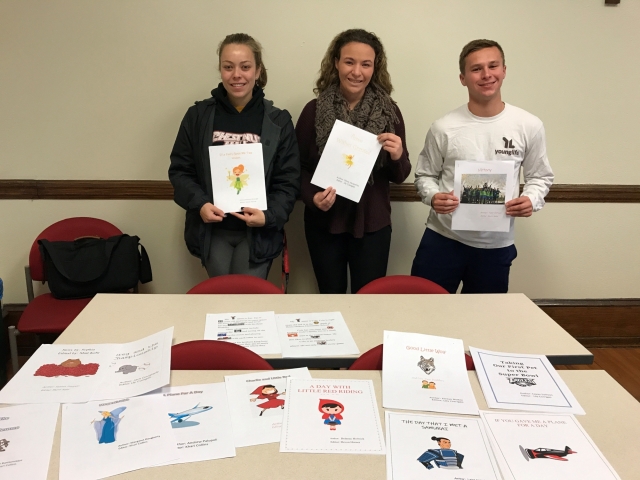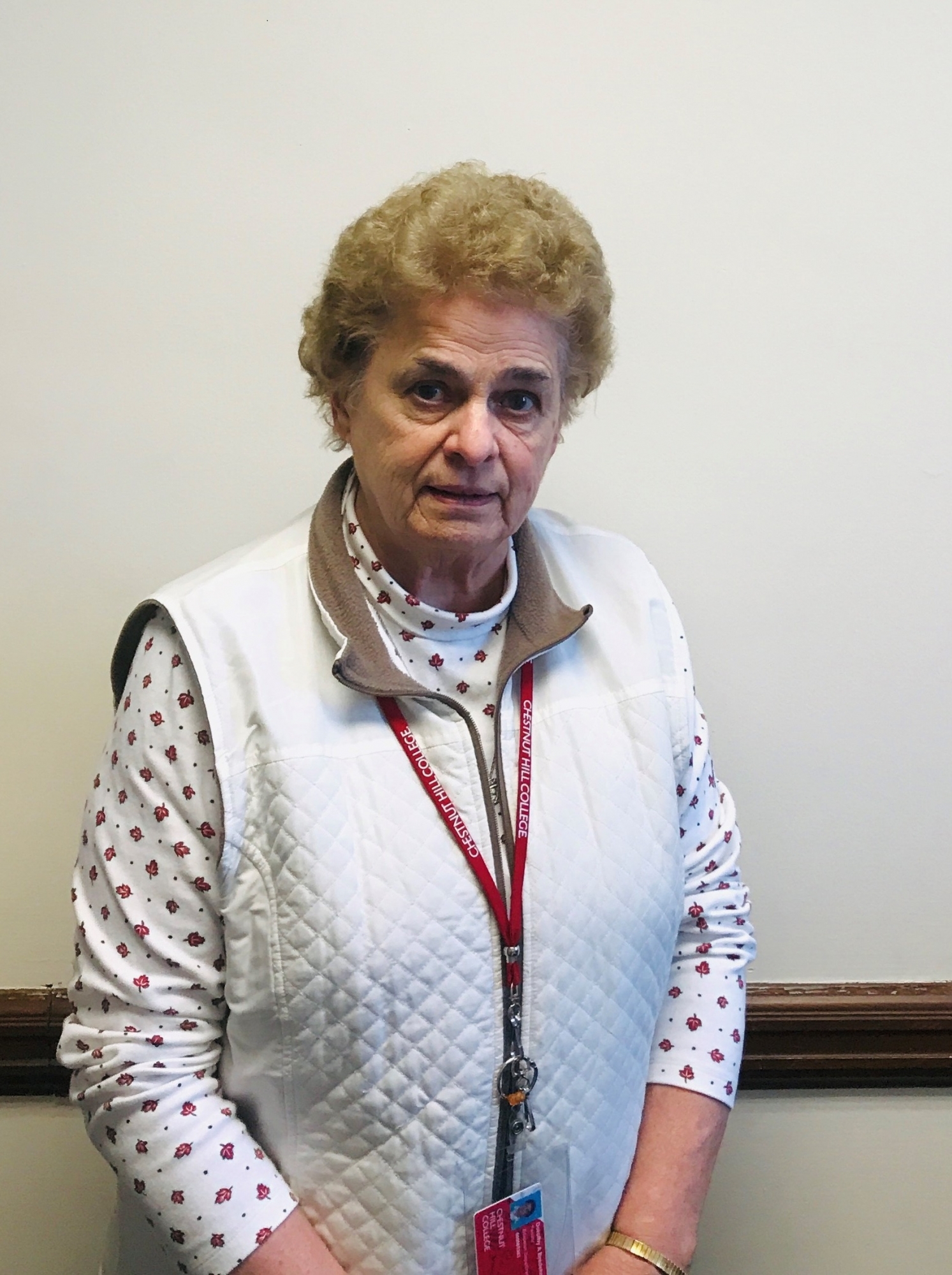 A class of early education students from Chestnut Hill College collaborated over the fall semester with third-graders from the St. Genevieve School on imagining, writing, editing and designing graphic novels.
A class of early education students from Chestnut Hill College collaborated over the fall semester with third-graders from the St. Genevieve School on imagining, writing, editing and designing graphic novels.
The College’s Education Liaison Dorothy Bredehoft, SSJ, Ed.D., created the Graphic Novel Project for her class, Early Childhood Education. She and the four students in her class worked this semester with 22 third-graders from St. Genevieve’s on producing graphic novels; like comic books, graphic novels use sequential art to tell their story, but they are typically much lengthier than comics. The project, aligned with the standards of the Pennsylvania Department of Education, was part of the language art skills class for the third-graders.
Sister Dorothy, who established the project because she wanted her students to work firsthand with the foundations of early literacy and language development, said the endeavor was a success for all the students involved.
“An experience like this opens doors of possibility for both the CHC students and the third-graders,” Sister Dorothy said. “The CHC students gain the experience of planning and preparing to teach young students as well as actually teaching in a classroom. And the third-graders learn about the intricacies of language and grammar, the differences between writing and editing, and the overall work that goes into creating a graphic novel.”
The CHC students began the project by having the third-graders design and name a stick puppet. The third-graders wrote a brief description of their individual puppet, and the CHC students then edited it for grammar and clarity. This aspect of the project was crucial to teaching the third-graders the difference between writers and editors, as it showed them that writing could be improved by using the right word and correct grammar.
Next, the CHC students gave each third-grader a unique story starter, which they in turn used as the groundwork from which they imagined and built a longer narrative. Once the children finished their first drafts, the CHC students edited their stories, making sure the third-graders agreed with the changes. Afterwards, the children read their updated stories to their groups, with some of them deciding to make further revisions still.
The last stage of production involved the CHC students helping the third-graders design the covers of their graphic novels. After the graphic novels received final edits and were printed and bound, Sister Dorothy and her students returned to St. Genevieve’s and presented them to the third-graders. The children were thrilled with their finished books, Sister Dorothy said.
Lily Regina Corrigan, a sophomore education student from Sister Dorothy’s class, said she was impressed with how hard the third-graders worked on the project.
“I was amazed by the imagination and creativity of the children,” she said.
Sophomore student Devon Ann Horner echoed Corrigan’s sentiment.
“The group that I had were good workers,” Horner said. “They focused on the task at hand most of the time and always completed their work.”
The project’s practical, experiential approach to learning provided the CHC students with a wealth of valuable experiences. Over the course of the semester, they learned the significance of developing and planning teaching strategies, using language properly and revising writing to improve details and reinforce order.
Matt Kehr, another sophomore, said he learned just how much preparation is needed to successfully teach a complex task to young students, who each have individual needs.
“I had to do a lot of planning and preparation to make the lesson flow for the students,” Kehr said. “I also learned that you are going to have to accommodate and adapt to other children more than others. Adapting and accommodating to students are something a future teacher like myself will have to adapt to.” 
In like manner, the project afforded third-graders the chance to learn the skills necessary for communicating effectively, as the educational benefits of familiarizing children with graphic novels are well-documented. For one, graphic novels offer readers a complex reading experience since they must rely on both dialogue and illustrations to infer the meaning of the story. This blend of text and images bolsters reading comprehension and allows for greater insight into the narrative. Moreover, graphic novels can also engage reluctant readers who may have trouble tackling a book laden with text and devoid of visual aids.
“Learning comes from doing,” Sister Dorothy said. “The more the education students explore the teaching experience, the better prepared they’ll be when they eventually stand alone in a classroom and teach students for the very first time. Similarly, the more we can introduce children to the complexities of language and encourage them to read and write, the stronger their abilities will be when it comes to writing and reading comprehension.”
Corrigan said she loved working with the third-graders, from whom she “always learned something new.”
“While working with these children, I learned that every child learns and interprets information differently, so as a teacher I have to be able to adapt to this so that each child can be successful in the classroom,” Corrigan said. “I also learned that it takes a lot of patience and hard work with children, but at the end of the day it’s the best feeling when they are successful.”
All in all, the Graphic Novel Project provided all the students with a valuable educational experience. What they learned during the project, Sister Dorothy hopes, will generate new and exciting opportunities for them academically, personally and professionally. Most importantly, the third-graders’ graphic novels, created from scratch, exist as proof that with enough dedication and effort anything can be accomplished.
“Again, learning comes from doing,” Sister Dorothy said. “The graphic novels are evidence of this, and their books, which the students can hold in their hands and put on their shelves, exist as a token of their academic growth.”





